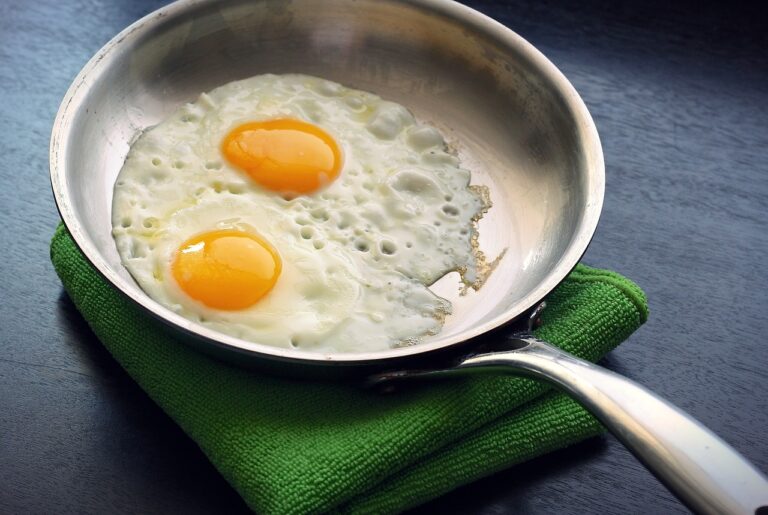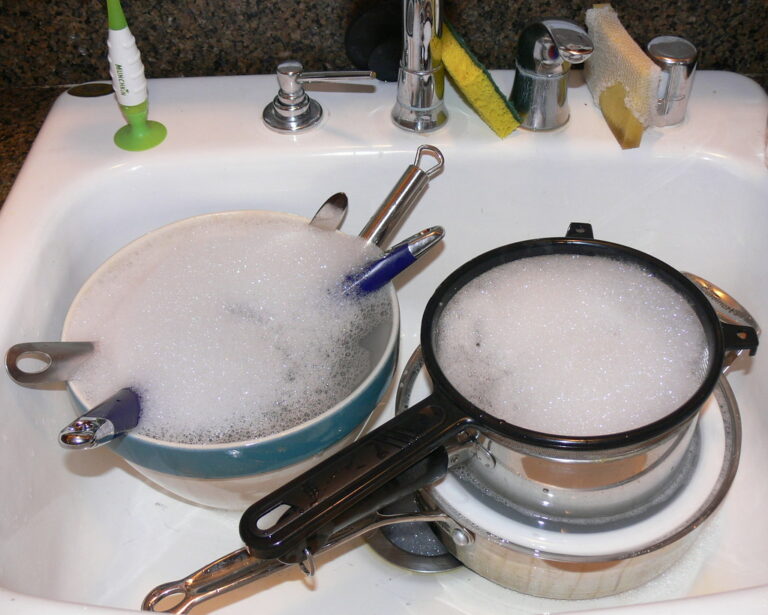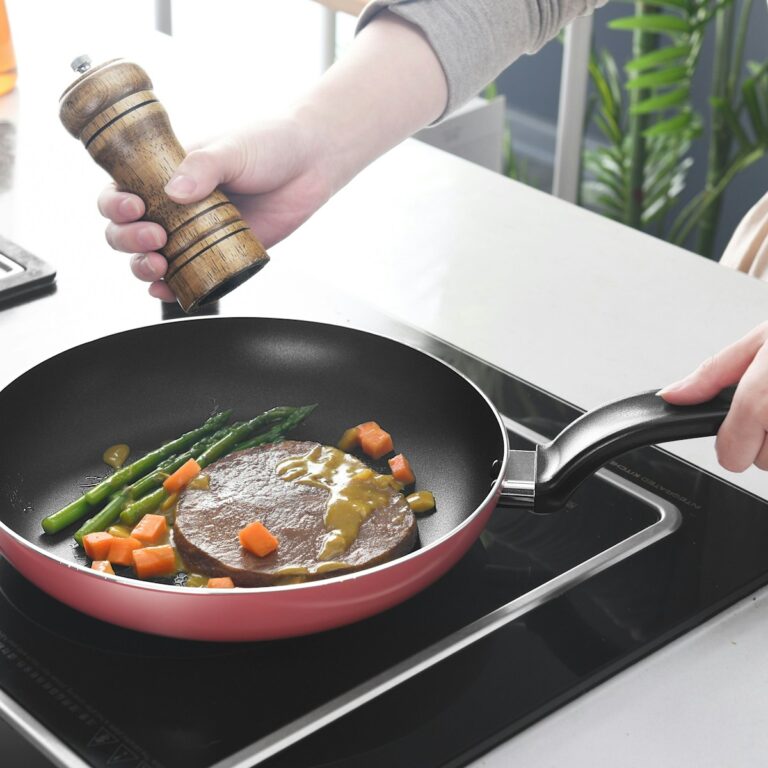In the realm of cooking, cast iron pans have earned an almost mythical status. Their rugged charm and timeless appeal have made them a staple in kitchens around the world. Yet, amid the admiration and fascination, a question often emerges: Are cast iron pans truly non-stick? As a passionate home cook and curious explorer of culinary nuances, I’ve embarked on a journey to demystify this question and uncover the truth behind the non-stick properties of cast iron pans.
Join me as we unravel the complexities, unveil the chemistry, and address the myths surrounding the non-stick reputation of cast iron cookware. In this guide, we’ll delve into the science behind seasoning, the factors influencing non-stick performance, and practical tips to achieve optimal results. So, let’s embark on this culinary expedition, one that promises to shed light on the captivating world of cast iron pans.
The Myth of Cast Iron Pans Being Non-Stick:
The notion of cast iron pans being inherently non-stick has circulated for generations, fueling expectations of easy food release without the need for excessive oil or butter. This perception, however, doesn’t paint the full picture. While cast iron pans can indeed develop impressive non-stick qualities, achieving this state requires more than simply purchasing a new pan and putting it to immediate use.
It’s essential to clarify that fresh, out-of-the-box cast iron pans are not automatically non-stick. In fact, they possess a rough, porous surface that lacks the characteristics commonly associated with non-stick cookware. The true magic of cast iron’s non-stick reputation lies in a process known as seasoning—a transformative journey that results in the development of a natural non-stick patina.
As we delve deeper into the intricacies of seasoning and the science behind it, we’ll uncover the steps required to turn a humble cast iron pan into a cooking companion that effortlessly releases food and enhances your culinary creations.
The Reality: Developing a Natural Non-Stick Patina:
While the immediate non-stick properties of cast iron pans may be a myth, the journey towards achieving a natural non-stick surface is a tangible reality. This transformation is brought about by the process of seasoning—a foundational practice that sets cast iron pans apart from their non-stick counterparts.
Seasoning involves the application of a thin layer of oil to the pan’s surface, followed by exposure to high heat. This seemingly simple process initiates a series of chemical reactions that result in the formation of a polymerized layer, often referred to as the pan’s “patina.” It’s this patina that gradually bestows the sought-after non-stick qualities upon the cast iron surface.
Understanding the chemistry behind seasoning and the role of oil polymerization is key to appreciating the science that makes cast iron pans a joy to cook with. Let’s delve deeper into the mechanics of seasoning and explore how it transforms cast iron into a non-stick powerhouse.
Nurturing the Patina: How Seasoning Creates Non-Stick Properties:
The Chemistry Behind Seasoning: At the heart of cast iron’s transformation into a non-stick marvel is the chemistry of seasoning. When oil is heated to its smoking point and applied to the pan’s surface, it undergoes a process called polymerization. During polymerization, the oil molecules break down, recombine, and form a resilient layer that bonds with the cast iron on a molecular level. This layer gradually builds up with each seasoning session, resulting in a smooth, non-stick surface that enhances cooking and simplifies cleanup.
The Role of Oil Polymerization: Oil polymerization is the driving force behind the development of the natural non-stick patina. As the oil molecules transform into a durable, polymerized layer, they fill in the pores and imperfections on the cast iron’s surface. This process not only reduces the roughness of the pan but also creates a barrier that prevents food from sticking. The more layers of polymerized oil that accumulate through repeated seasoning, the more effective the non-stick properties become.
It’s worth noting that the type of oil used for seasoning can influence the quality of the patina. Oils with high smoke points, such as vegetable oil or flaxseed oil, are commonly recommended for seasoning due to their ability to withstand the high temperatures required for polymerization.
As we proceed on this journey of unraveling the non-stick mystery, let’s explore the factors that impact the non-stick performance of cast iron pans.
Factors Influencing Non-Stick Performance:
While seasoning plays a pivotal role in developing non-stick properties in cast iron pans, several other factors contribute to the pan’s overall performance. Understanding and managing these factors can make a significant difference in achieving optimal non-stick results.
Quality of Seasoning: The effectiveness of the non-stick patina is closely tied to the quality of seasoning. Properly executed seasoning sessions—each building upon the previous one—result in a robust and smooth layer that enhances the pan’s non-stick capabilities. Inconsistent or inadequate seasoning can lead to uneven surfaces and diminished non-stick performance.
Cooking Techniques and Temperatures: The way you cook also impacts the pan’s non-stick properties. Cooking techniques, such as searing or sautéing, may require higher temperatures that challenge the resilience of the patina. Adhering to proper preheating and oiling techniques can mitigate these challenges and maintain the non-stick qualities.
Maintenance and Care: The longevity of a cast iron pan’s non-stick properties hinges on how well it’s maintained. Avoid harsh detergents and abrasive scrubbers that can strip away the patina. Instead, opt for gentle cleaning methods that preserve the seasoned layer. Additionally, consistent use and proper storage contribute to maintaining the integrity of the non-stick surface.
As we continue our exploration, let’s dispel some common myths and misconceptions surrounding the non-stick nature of cast iron pans.
Debunking the Myths and Misconceptions:
As with any culinary topic, myths and misconceptions abound when it comes to the non-stick properties of cast iron pans. Let’s address some of the common misunderstandings that may cloud our perception of cast iron’s true non-stick capabilities.
Myth: Cast Iron Pans Are Non-Stick from Day One Reality: Freshly purchased cast iron pans have a rough, porous surface that lacks the non-stick qualities. Seasoning is the process that gradually develops the non-stick patina.
Myth: Seasoning is a One-Time Process Reality: Achieving a reliable non-stick patina requires multiple rounds of seasoning. Each layer of polymerized oil contributes to the pan’s non-stick performance.
Myth: Acidic Foods Will Damage the Patina Reality: While prolonged exposure to highly acidic foods can erode the patina, occasional use of such ingredients is unlikely to cause significant harm.
Myth: You Shouldn’t Use Soap on Cast Iron Pans Reality: Gentle use of mild soap is acceptable for cleaning cast iron pans. The patina is robust enough to withstand occasional soap use without being compromised.
Myth: Non-Stick Means No Oil Needed Reality: While a well-seasoned cast iron pan requires less oil than traditional non-coated pans, a small amount of oil or fat enhances the non-stick performance and adds flavor to your dishes.
By dispelling these myths, we can approach our cast iron pans with a clearer understanding of their capabilities and how to maximize their non-stick potential. Let’s now move on to practical tips and tricks to achieve the best non-stick results from your cast iron pan
Achieving Non-Stick Results: Tips and Tricks:
Mastering the art of cooking with a cast iron pan requires a combination of technique, knowledge, and practice. Here are some practical tips and tricks to help you unlock the full non-stick potential of your cast iron cookware.
Preheating the Pan: Allow your cast iron pan to preheat thoroughly before adding any ingredients. A properly preheated pan minimizes the risk of food sticking and promotes even cooking. To check if the pan is ready, sprinkle a few drops of water on the surface—if they sizzle and evaporate, the pan is ready to use.
Using the Right Cooking Oils: While cast iron pans have non-stick capabilities, using a small amount of cooking oil or fat is still beneficial. This not only enhances the non-stick performance but also imparts flavor to your dishes. Opt for oils with high smoke points, such as canola, grapeseed, or avocado oil, for best results.
Mastering the Art of Heat Control: Regulating heat is crucial for preventing food from sticking. Start with medium heat and adjust as needed. High heat can lead to burning and sticking, while low heat may not achieve the desired sear or caramelization.
Avoid Crowding the Pan: Overcrowding the pan with ingredients can cause steam to build up, hindering browning and promoting sticking. Cook in batches if necessary to maintain proper spacing between ingredients.
Gentle and Patient Flipping: When searing or sautéing, allow the food to develop a sear before attempting to flip. Food that has developed a crust is more likely to release easily from the pan.
Regular Maintenance and Re-Seasoning: To preserve the non-stick patina, adopt a consistent cleaning routine using mild soap and a soft brush or cloth. After cleaning, ensure the pan is thoroughly dried to prevent rust. Additionally, periodic re-seasoning helps maintain and enhance the non-stick qualities over time.
As I’ve embarked on my own journey with cast iron cookware, these tips have transformed my cooking experience and allowed me to fully embrace the versatility and charm of cast iron pans.
My Personal Experience: Finding Harmony with Cast Iron:
As a passionate home cook, my journey with cast iron pans has been a delightful evolution. From initial skepticism to becoming a dedicated enthusiast, I’ve experienced firsthand the magic of cast iron’s non-stick transformation.
I vividly remember my first attempts with a newly acquired cast iron pan. While the initial results were promising, they weren’t the effortless non-stick experiences I had envisioned. It was through research, experimentation, and a willingness to learn that I unlocked the secrets of successful cast iron cooking.
With time, my pan developed a lustrous patina, a testament to the countless meals prepared and the seasoning sessions undertaken. Searing steaks, flipping pancakes, and crafting stir-fries became a joyous affair as the non-stick surface consistently delivered impeccable results. The pan’s ability to release food effortlessly, coupled with the depth of flavor it imparted to each dish, solidified its position as a cherished culinary tool.
Through the highs and occasional learning moments, I’ve come to appreciate that non-stick properties are not instantaneous but earned. Patience, care, and respect for the seasoning process are essential ingredients in cultivating a truly non-stick cast iron pan.
Conclusion:
So, are cast iron pans truly non-stick? The answer lies in the journey—from rough and porous beginnings to a seasoned surface that glows with non-stick prowess. As we’ve navigated the science, debunked myths, and explored practical techniques, I hope you’ve gained a deeper understanding of the captivating world of cast iron’s non-stick transformation.
In your culinary pursuits, may you find joy in perfecting the art of seasoning, relish the moments of culinary creation, and savor the flavors that only a well-seasoned cast iron pan can provide. Remember that the magic of cast iron lies not only in its non-stick capabilities but also in the stories it weaves into every meal.


